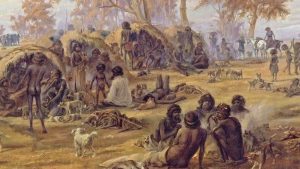Immigration
Why Do People Migrate?
Learning Intentions
-
I am learning to identify and describe continuities and changes for different groups in the past and present.
Success Criteria
-
I am learning about stories of groups of people who migrated to Australia since Federation (including from ONE country of the Asia Region) and
-
I am learning to identify reasons they migrated to Australia.
Student Booklet – Download to One Drive – Term 1 History
History – Why do people migrate Term 1
Session 1
Session 2 – the first Fleet and the Gold Rushes
Session 3 – Why do people Migrate? A Better Life?
Session 4 – Seeking Refuge
Session 5 – Seeking Safety
Session 6 – Populate or Perish – Italian Australians
Extra Reading Italians in Australia
Session 7 – World War II – displaced People
Session 8 – Postwar Migration Facts and Figures
Session 9 – Why do people migrate? Seeking Safety
Vietnamese in Australia Seeking Refuge
Session 10 – the Refugee Debate
Session 11 – The Vietnamese in Australia – Cabramatta and Springvale
Session 12 – Our Pacific Neighbour’s: New Zealand and Australia: A Shared Beginning
New Zealand and Australia A Shared Beginning
Session 13: Our Pacific Neighbours: South Sea Islanders in Australia
South Sea Islanders in Australia
Session 14: Immigration from Africa
Immigration from Africa
Session 15: Working Together – Snowy Mountain Scheme
The Snowy Mountain Scheme
Session 16: Making a Difference
Project
Working Together
Learning Intentions
Inquiry Questions
How did Australian society change throughout the twentieth century?
- I am learning to describe the causes and effects of change on society.
- I am learning to compare the experiences of different people in the past.
Inquiry Skills
- I am learning to sequence information about events, the lives of individuals and selected phenomena in chronological order and represent time by creating timelines.
- I am learning to locate and collect useful data and information from primary and secondary sources.
- I am learning to present ideas, findings, viewpoints and conclusions in a range of communication forms that incorporate source materials.
Success Criteria
- I can identify the contribution of individuals and groups to the development of Australian society since Federation
Inquiry Skills
Researching
- I can sequence information about people’s lives, events, developments and phenomena using a variety of methods including timelines
- I can locate and collect relevant information and data from primary and secondary sources
Analysing
- I can examine primary and secondary sources to determine their origin and purpose
- I can examine different viewpoints on actions, events, issues and phenomena in the past and present
Evaluating and reflecting
- I can evaluate evidence to draw conclusions
- I can work in groups to generate responses to issues and challenges
- I can reflect on learning to propose personal and/or collective action in response to an issue or challenge, and predict the probable effects.
Communicating
- I can present ideas, findings, viewpoints and conclusions in a range of texts and modes that incorporate source materials,
Readings
Surf Life Saving
Australians Clean the Way
Australia’s Multicultural Pearling Industry– 1
The Snowy Mountain Scheme
A Multicultural Society
National Living Treasures
Jimmy Little
Eddie Mabo and the Native Title Act – 1
Research
https://aiatsis.gov.au/explore/articles/eddie-koiki-mabo
http://ia.anu.edu.au/biography/mabo-edward-koiki-eddie-16122
Personal Life
5 Full sentences to share about Eddie Mabo
Work Life
3 Full sentences about Eddie’s work life.
A paragraph to tell other about his political life and what he worked to achieve.
Australia Day
Working in groups of 5, allocate an icon to each member of your group and research the following icons of Australia to write a paragraph on how it is related to Australia.
It is expected that each team member will write a minimum of 3 sentences and include an image of their icon. Write your notes and then write a paragraph that will be collated on a group poster for classroom display.
E.g.
Captain James Cook
Captain James Cook is the most famous explorer to come to Australia. He became the first recorded European to explore the east coast of Australia. His first sighting of Australia occurred on the 19th of April 1770. Captain James Cook claimed the east coast for Britain on 22 August 1770 at Possession Island, naming eastern Australia – New South Wales. His expedition returned to England via the Indian Ocean and Cape of Good Hope.
Each person is must write a short paragraph on why they are proud to be Australian.
Sentence starter: I feel proud to be Australian because…
The Australian Flag

The Coat of Arms

Captain James Cook

Indigenous Australians

The Endevour
